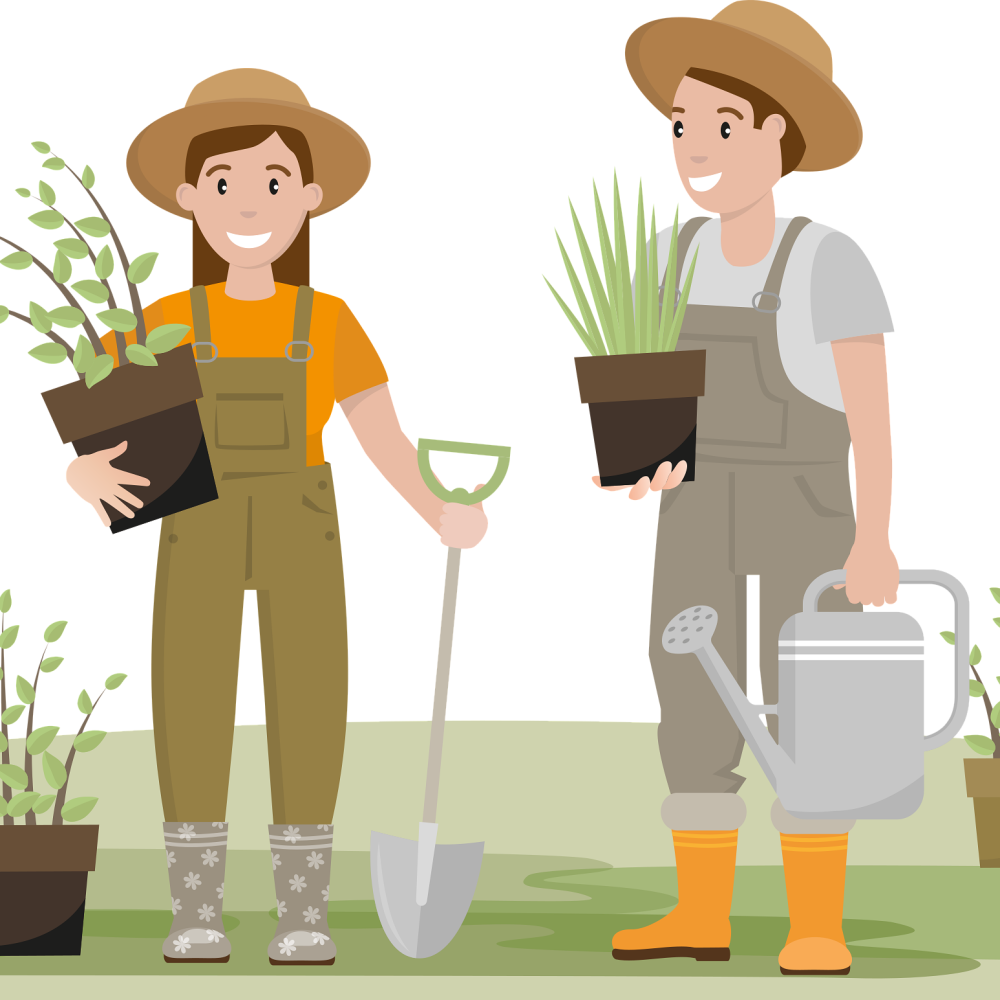
Gardening can be a fun pastime for many, and we would like to share some tips and tricks that help keep our creeks and oceans clean! Remember, anything that is dumped into a storm drain or gutter, or discarded into a creek, ends up on our beaches without being treated. Understanding how to prevent pollution is critical to protecting our local watersheds and ecosystems.
How Can Gardening Hurt the Ocean?
Caring for plants on property that is miles from the ocean may seem to have little to do with creek and ocean pollution, but activities involved in gardening can be very detrimental to water quality. Normal garden maintenance often generates yard waste and chemical runoff that must be properly handled. Pesticides and fertilizers that reach creek or ocean water are harmful to aquatic life and can cause problems for people and disrupt the delicate balance of wetlands. The nutrients from garden runoff fertilize aquatic plants; the plants grow at an unnaturally excessive rate, taking oxygen away from other aquatic life, which then dies. Yard waste and sediment washed down creeks can harm aquatic life by clogging the gills of fish, blocking sunlight, and raising water temperatures.
Solutions for Reducing Pollution from Gardening
Pesticide Usage & Management
- Don’t use pesticides during the rainy season as they may be carried by the next storm into the creeks or ocean. Better yet, reduce or eliminate the use of pesticides.
- When irrigating the landscaped areas, avoid over-watering, not only to conserve water but to avoid runoff of water, which may carry nutrients and pesticides to the creek or ocean directly from the storm drain.
- Store pesticides and application equipment properly and dispose of the used containers and unused chemicals at a local hazardous waste facility.
- Anyone using pesticides should understand how to handle them properly.
Use Physical, Biological, and Chemical Controls Instead of Toxic Pesticides
- Physical controls, such as hand-picking, traps, barriers, or a strong jet of water can reduce or thwart many pests, especially in the early stages of infestation.
- Many beneficial insects and animals eat detrimental insects. Encourage the “good” ones to live near your property.
- Ask your pesticide supplier which are the least toxic options for your particular problem.
Proper Disposal of Pesticides
- Dispose of unused pesticides and empty containers at your local hazardous waste facility. If you have any questions, please contact the Santa Barbara County Community Hazardous Waste Collection Center at 805-882-3602 or email hazwaste@countyofsb.org.
- Remember, dumping anything into a creek, gutter or storm drain is ILLEGAL!
Yard Waste
- Compost the material for your own use or
- Properly dispose of yard waste in your green waste bin.
Myth-busting: Pollution and Creek Contamination
MYTH #1: Runoff from streets and storm drains is treated at wastewater treatment plants.
FACT: Storm drain runoff in Santa Barbara County is not treated and goes directly into our creeks — what goes into the storm drain ends up at the beach. That is why it is important to ensure that pollutants such as animal waste, automotive fluids, garbage, and chemicals do not end up in storm drains.
MYTH #2: Most creek pollution comes from a few big polluters.
FACT: The well-known stories about environmental problems tend to focus on big, recognizable targets such as industrial factories, leaking toxic waste dumps, and oil spills. As a result, people often forget that the majority of water pollution comes from small sources — especially at the household level.
MYTH #3: The impact of one household doesn’t really matter.
FACT: Although an individual home might contribute only minor amounts of pollution, the combined effect of an entire neighborhood or city is serious
MYTH #4: Creek contamination and beach postings are usually caused by chemical pollution such as paints, solvents, and motor oils.
FACT: Chemical contamination is always a concern. Yet, bacterial contamination from animal waste, litter, leaking septic tanks, garbage, and green waste also threaten creeks, beaches, wildlife and your health. Beach postings are actually triggered by bacterial contamination.
Find more information on clean water management and practices, please read the Project Clean Water brochures clean water gardening practices, available in English and Spanish.
Project Clean Water is part of a unified community effort to clean up Santa Barbara County’s creeks and beaches. It is a coalition of nonprofit organizations, businesses, government agencies and concerned citizens. All of these groups have these goals: to improve water quality in our creeks and the ocean, to promote public health and to protect the quality of life in Santa Barbara County for everyone. By implementing the solutions in this pamphlet, you can take part in protecting and improving the water quality of local creeks and making our beaches safe again. The Project Clean Water Best Practices webpage is a great resource for finding less-toxic products to use around your home and garden.


